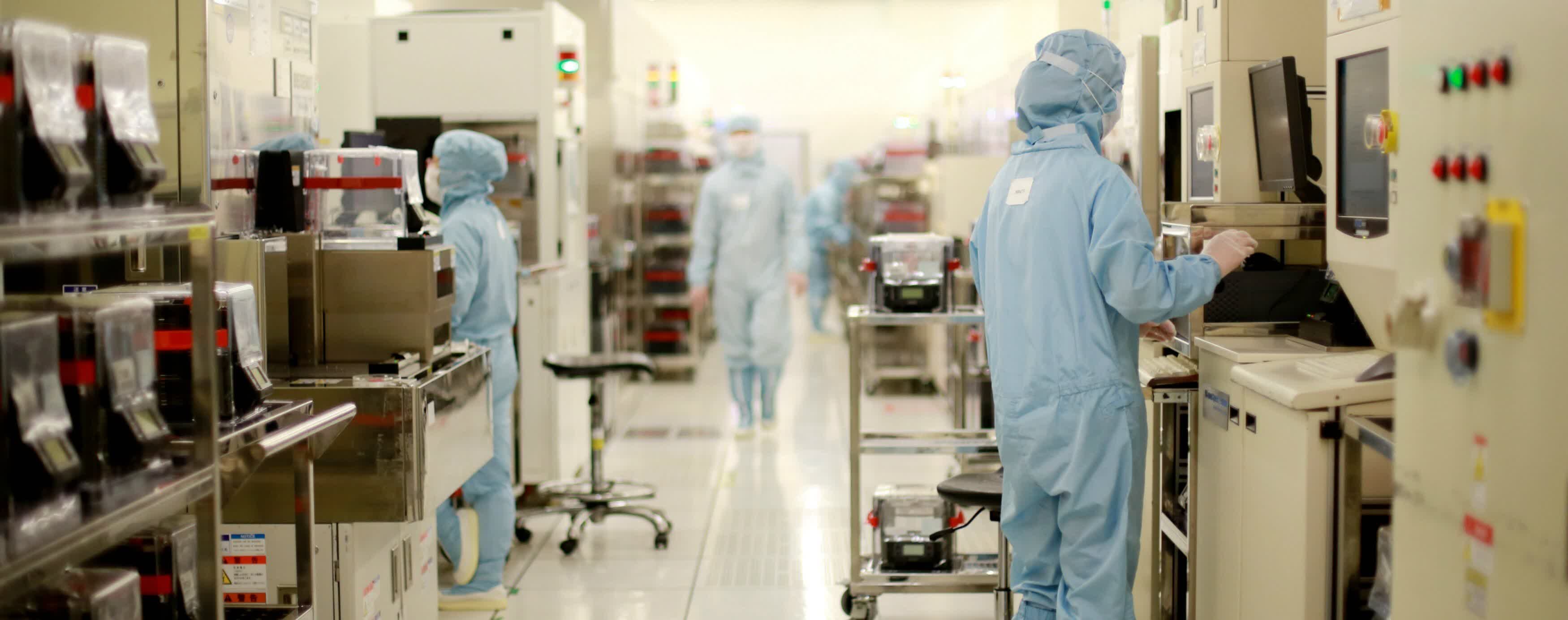Chipmakers are expected to spend $146 billion on capacity expansions this year
The big motion-picture show: Driven by the scrap shortage and a surge in need for semiconductors, chipmakers are spending more than always to aggrandize chapters. While about of this expansion is still expected to take place in Asia, information technology looks like the U.s. will also gain more ground when it comes to advanced procedure nodes.
Last calendar week, Samsung announced information technology would build a $17 billion chip mill in Taylor, Texas, confirming earlier rumors that this was a preferred location for a capacity expansion try known internally as the "Star Project." The new advanced fab will make fries for 5G and machine learning applications, but it won't be operational until 2024.
Nippon is looking to reignite its once-dominant silicon industry, and to that end it has allocated over $5.2 billion in subsidies for companies that are interested in edifice scrap fabs locally. The funds will help companies similar TSMC, Micron, and Kioxia, who are looking to manufacture DRAM, NAND, and other avant-garde fries in the country.

According to a report from The Wall Street Journal, the chip shortage and the unrelenting demand for electronics have acquired a surge in semiconductor spending in several regions, including the US. Chipmakers are nevertheless investing in chapters expansions in Communist china, Taiwan, and Southward Korea, but they're also interested in how they can create a more resilient supply concatenation by setting up factories in places similar Nihon, the US, or the EU.
Gartner estimates investments made by chip manufacturers will total $146 billion this twelvemonth, which is 50 percent more upper-case letter expenditures made before the pandemic began. It's likewise double the amount these companies invested in 2022, merely 80 percentage withal goes into building more manufacturing capacity in Asia. Gartner believes this ratio volition be similar through 2025, and notes the US is currently capturing around 14 pct of the global investment in semiconductors.
Too read: ASML's next-gen EUV machine will requite Moore's Police force a new lease of life
Analysts besides estimate that only about six percent of the semiconductor manufacturing capacity added over the next x years will exist located in the The states. This is why the Chamber of Commerce urged Congress to pass legislation that will see $52 billion in directly subsidies being offered to companies that program to build new scrap factories. However, the cost of operating a fleck plant in the US is significantly higher than doing the aforementioned in Asia, which ways regulators must come with even more incentives if they hope to concenter chipmakers.
China is pouring billions into bolstering its local semiconductor industry, and so are its neighbors. Republic of korea aims to double its almanac chip exports to $200 billion by the terminate of this decade, and to that end it has offered billions in tax breaks and subsidies, along with promises to ensure an adequate h2o supply, which is essential for scrap manufacturing.
The Biden assistants has promised to boost American manufacturing capacity, citing national security concerns. Samsung, TSMC, and Intel are building new factories in the US, but they won't exist operational for years. Analysts wait the Usa will possess around 24 percent of the global production capacity for advanced semiconductors past 2027, but virtually of it will probable remain in Asia for the foreseeable time to come.
Source: https://www.techspot.com/news/92401-chipmakers-expected-spend-146-billion-capacity-expansions-year.html
Posted by: moralesdarke1999.blogspot.com


0 Response to "Chipmakers are expected to spend $146 billion on capacity expansions this year"
Post a Comment